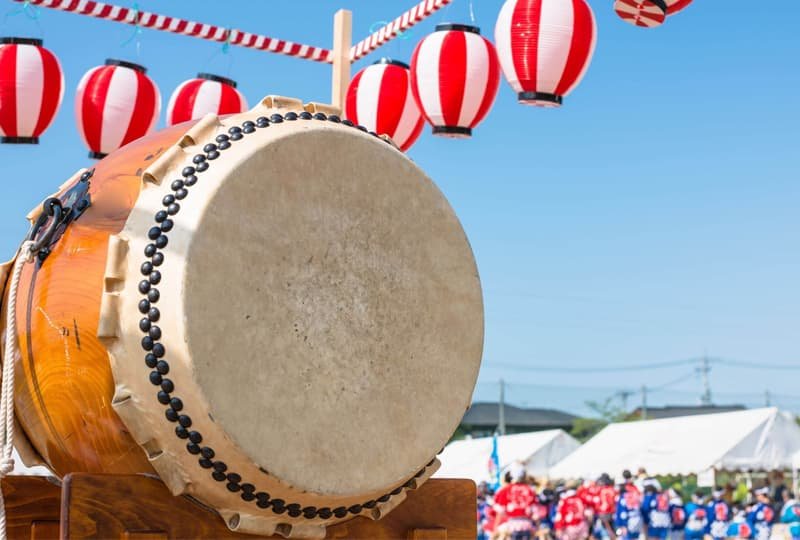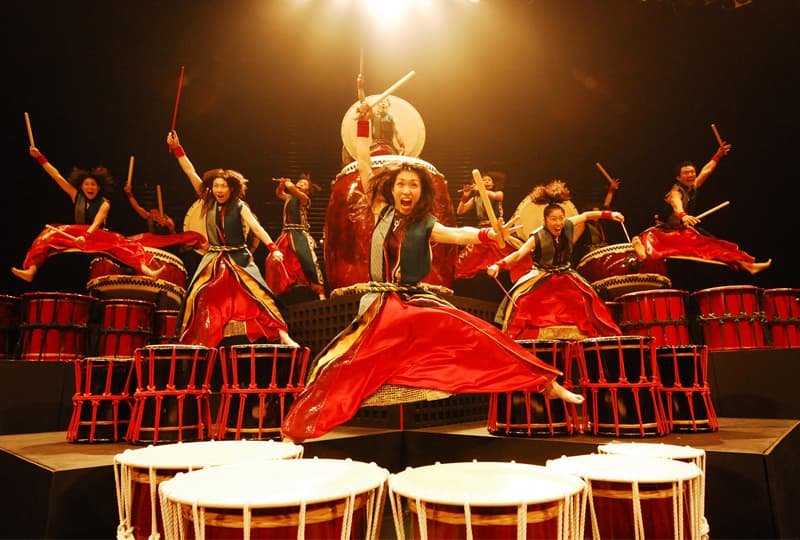Taiko Drumming - Cultural beauty and pride of Japan
(BNP)- On the occasion of the 50th anniversary of establishment of Vietnam and Japan diplomatic relations, Bac Ninh province organized the program "Meeting Bac Ninh - Japan" and the art performance themed "Cultural colors of Vietnam – Japan" at Kinh Bac Cultural Center, Bac Ninh city.

The art performance themed "Cultural colors of Vietnam – Japan" will perform various unique performances from Bac Ninh and Japan, including Quan Ho folk song; Kimono performance; Taiko drumming performance and Yosakoi dance…
Taiko is a Japanese traditional drumming with a long history. It is the beauty of Japanese cultural festivals and religious rituals as well as the spiritual life of the Japanese people.
According to archaeological and anthropological research, ancient people of the Jomon period knew how to use drums as a means of delivering information and as a musical instrument in religious rituals. However, the drums of this era were very different from today's Taiko drumming; they were made of clay covered in leather.
In fact, today's Japanese Taiko drumming is similar to Taiko in China and Korea. As a result, it is thought that ancient Taiko was introduced to Japan from the Asian Continent around the 5th-6th century, along with Chinese and Korean Buddhism. Thanks to the development of the "Dengaku" festival, the use of drums to accompany music became popular around the turn of the century.
During the Edo period, the drummers not only used the drums in festivals and religious events, but also they set up the groups. Since then, Japanese Taiko drumming skill competitions were founded.

The groups of Japanese Taiko drumming performance have grown in strength since 1945, following World War II. In 1951, Daihachi Oguchi created "Kumi Daiko." This is an independent form of drum performance that combines many different types of Taiko drumming, not associated with religious rituals or festivals.
However, the period from 1970s to 1990s seemed to be the boom period of Japanese Taiko drumming, with a series of professional drum groups operating strongly. In particular, the Taiko performance at the Tokyo Olympics in 1964 helped Taiko drumming become truly popular not only in Japan but also in Europe, Australia, South America,...
(Japanese court music) Taiko is used in two different contexts of orchestra and dance. Taiko will be set up in front of the stage and the Japanese Taiko drumming will be tapped for a beat after each segment of the performance end. Taiko is used to create sound effects for plays in various art forms such as Kabuki and Kyogen.
Taiko is a sound that has been passed down through the generations in Japan. It not only creates color for festivals and religious rituals but also creates spiritual values, the quintessence of Japanese culture, and the pride of the Japanese people.
There are three popular types of Japanese Taiko drumming:

Nagado Daiko
The nagado-daiko (long-bodied taiko) is by far the most popular taiko used in the modern kumi-daiko style of playing. They are also very common in festivals and in temples and shrines (where they are often called miya-daiko). There are many styles of playing this taiko, with a wonderful selection of different stands that hold the nagado-daiko in various positions.
Shime Daiko
A small drum, often used in taiko groups to keep the basic rhythm and establish time, but is a versatile solo instrument as well.
Okedo Daiko
The short bodied styles of okedo which are becoming increasingly popular have a loud, flat, booming sound, and are often played with slats of bamboo which produces a sharp, slapping sound. The larger form of okedo tend to be bigger than a typical nagado-daiko, often around six feet in length and three feet in diameter. They are usually played horizontally, raised up on a high stand.






